自給率僅1.6% 香港天台救農業?|With a 1.6% self-sufficiency rate, will rooftops save Hong Kong's agriculture?
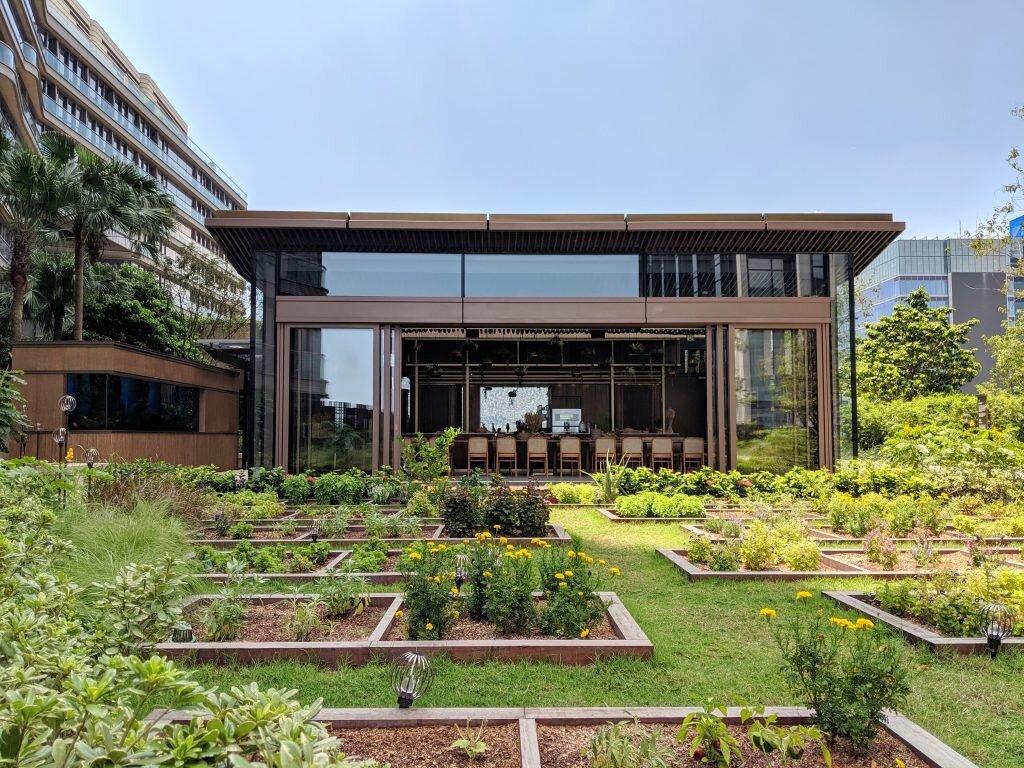
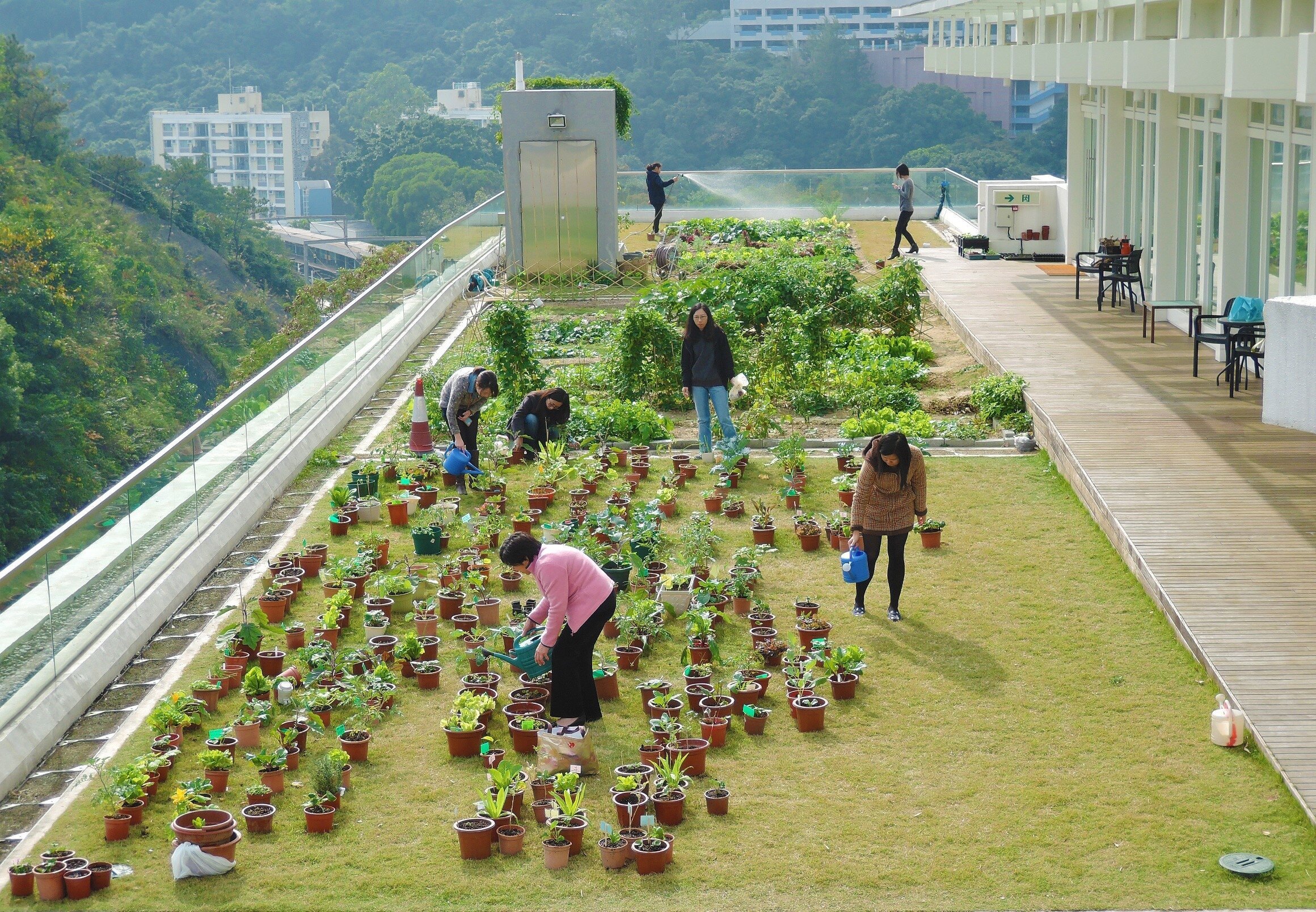

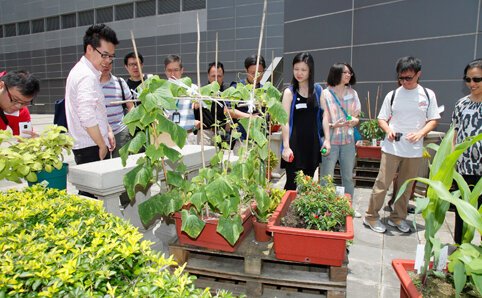

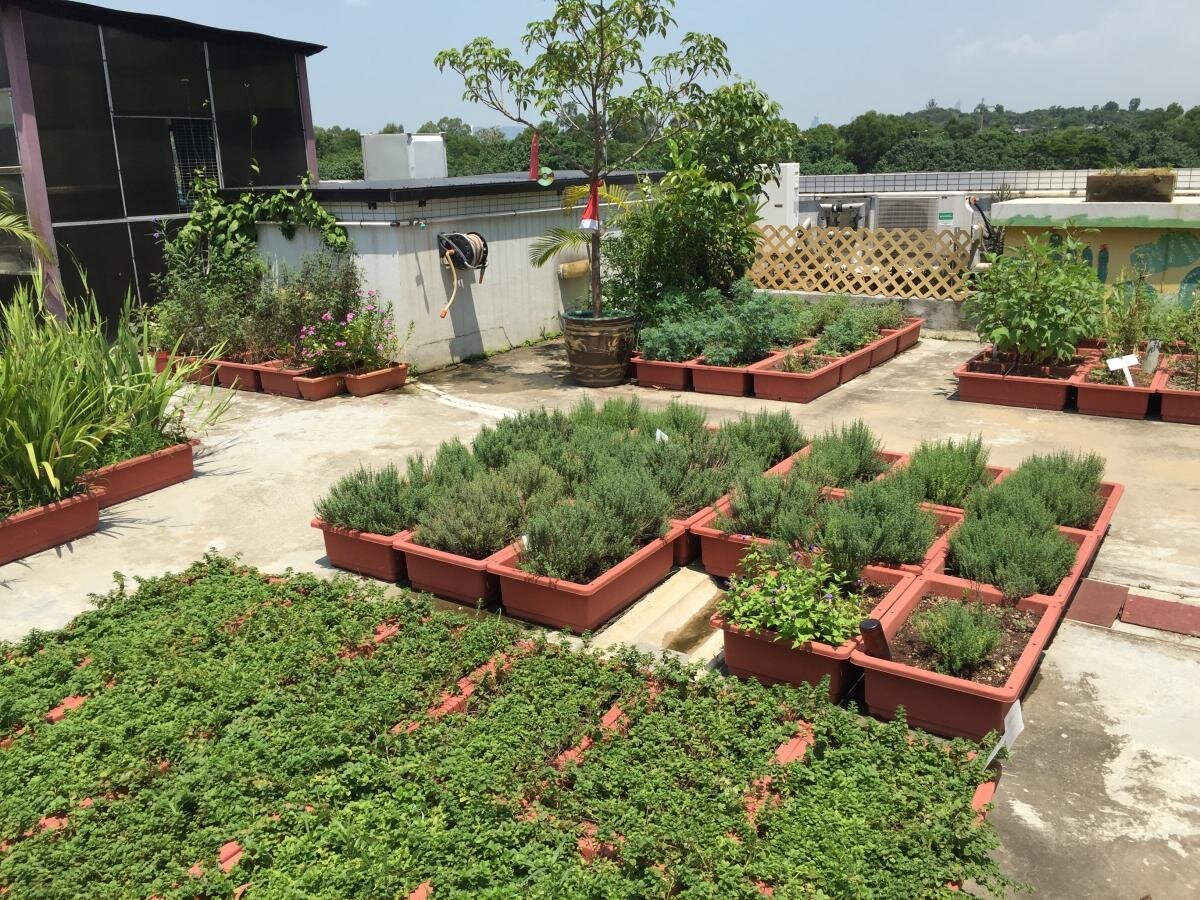
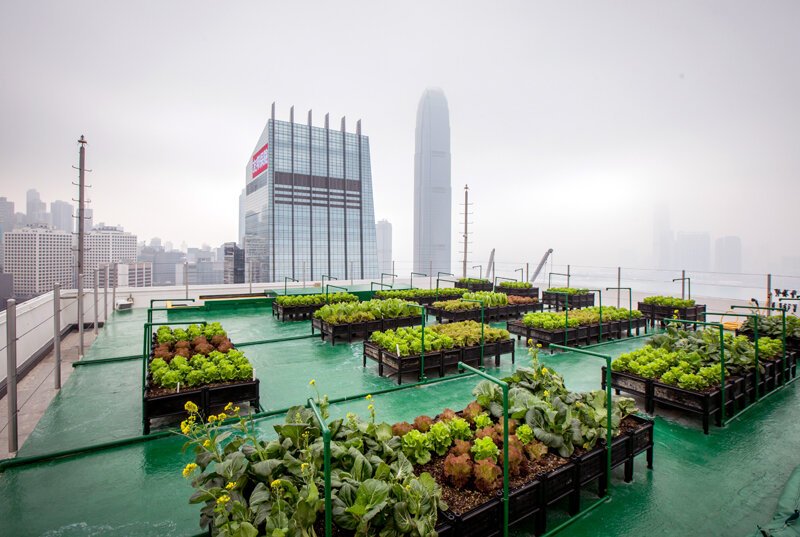


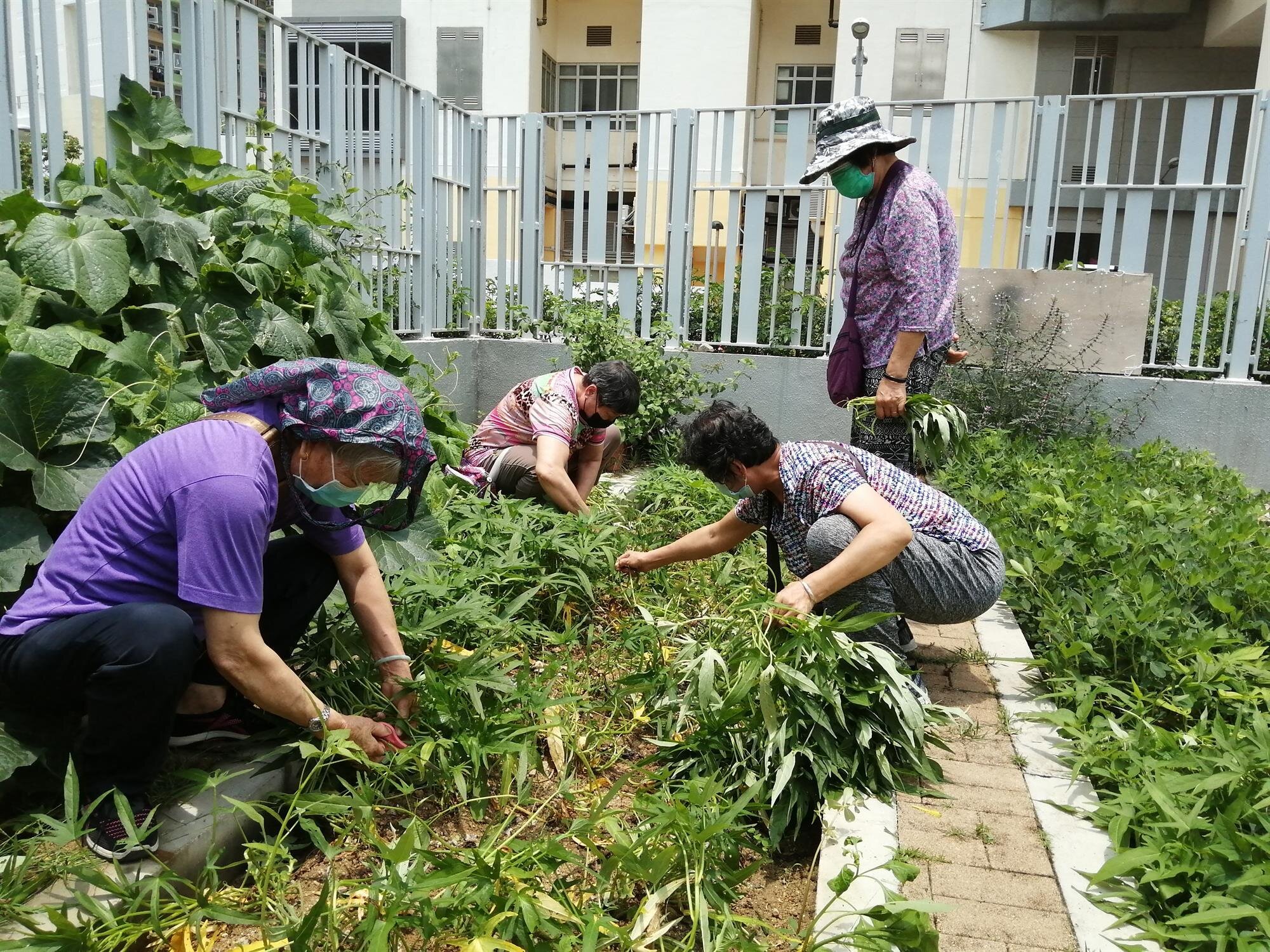
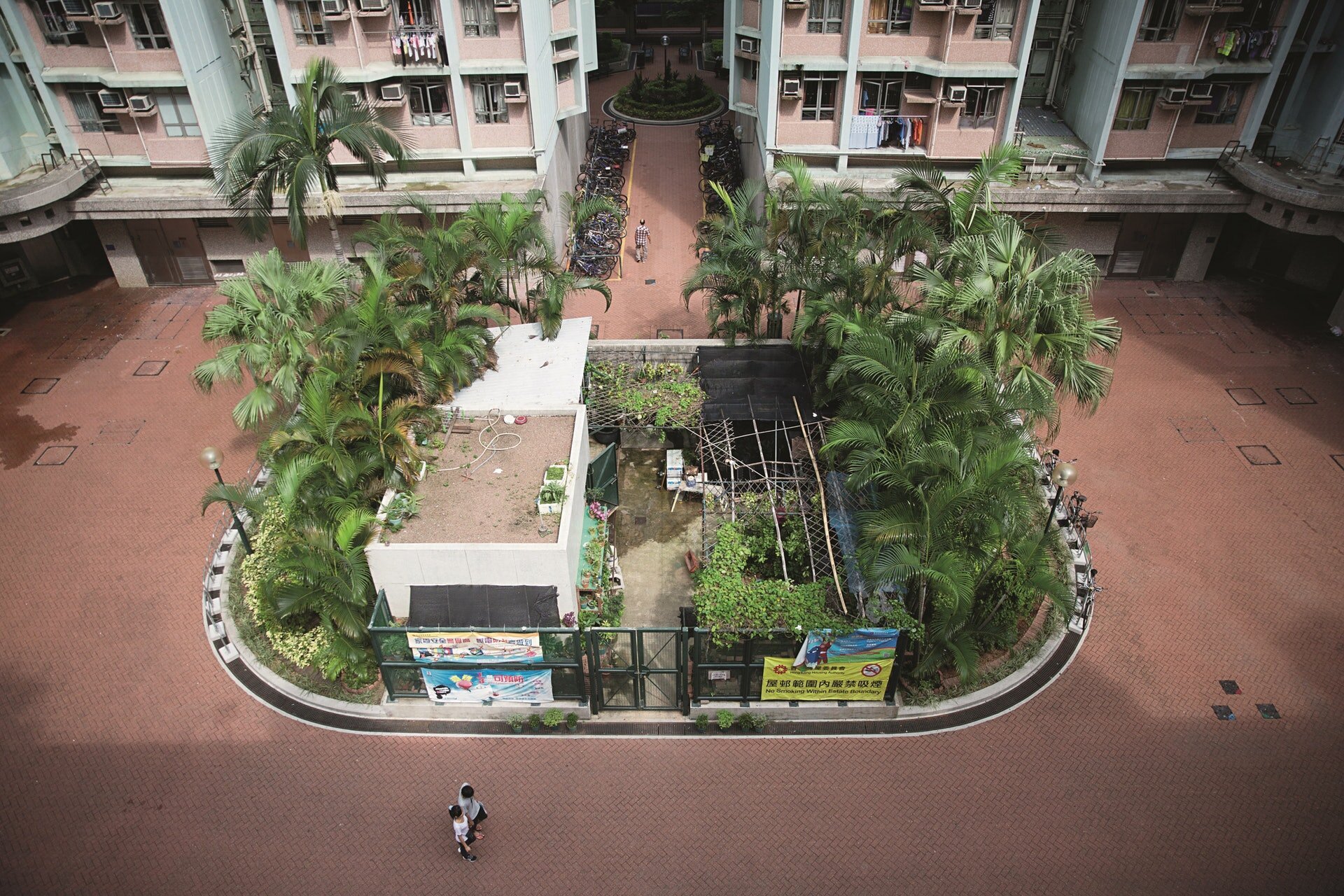
香港的農業生產,自上世紀80年代開始萎縮,根據漁農自然護理署數字,2020年的本地農產品只供應全港所需蔬菜的1.6%,但經歷過疫情蔓延、各國封城,一場疫症有如對我們敲起警鐘,令人反思香港如何才可在糧食方面變得更加自給自足?或者最起碼,減少對進口食物的依賴?就如全球各地一樣,隨著城巿發展,香港過去數十年間失去了大量農地,雖然或者已經無法挽回,但有不少研究指出,都市農耕的潛在生產力驚人,如果善用都市的閒置空間,或者仍能提高城市本地農產品供應。
香港這個石屎森林在過去十年間,已有不少大廈的屋頂進行綠化,或許我們能藉着世紀疫情這個機會,審視一下,香港到底有沒有發展都市農耕的潛力?
香港活躍農地 70年消失近萬公頃
1946年,蔬菜統營處成立,香港農業逐漸發展得愈來愈有規模,以應付當時急增的人口。
50年代,新界有過萬公頃的活躍農地,本地農業出產以稻米為主,至60年代起,蔬菜取代稻米,成為香港主要農作物產出。70年代,香港農地逐漸減少,原因主要有三:一是政府為開發新市鎮開始大量徵收香港農地;同時,不少發展商囤積農地待發展;第三,80年代初,集體官契(Block Crown Lease)附表中的用途,被判定並非限制土地用途,導致大量農地改為露天車場和儲物場。
時至2018年,尚用作耕作的農地只餘下735公頃,只及1950年代的7%,其中種植蔬菜的只有429公頃,荒廢的農地面積則高達3592公頃。
蔬菜自給率 曾高達近50%
在60年代,即使香港當時人口已逾300萬,新界的蔬菜產量仍可滿足香港近半的需求。及至70至80年代,內地低價的入口蔬菜增加、本港的蔬菜產出減少,自給率在1990年跌至約三成。1998年4月,內地供港蔬菜配額正式取消配額,大量蔬菜湧入香港市場,自給率在2020年只有1.6%。
新加坡與香港同樣地少人多,蔬菜自給率目前為10%,政府目標是在2030年做到30%。至於其他亞洲大城市如上海,亦保持有40%,內地農業部更有要求每個城市要達至一定的鮮活農產品自給率。
耕種潮流復興
有研究指出,在90年代後期起,因為1998年金融風暴,城市人開始追求人生的意義而對農耕體驗產生興趣,2003年的沙士肺炎爆發亦令城市人為了脫下口罩而走到田野享受耕作的樂趣。
因應耕種的潮流復興,香港市區內亦開始出現耕作活動,最先是大型私人屋苑開拓社區園圃,到2004年,康文署亦在各區舉辦社區園圃,當時的紀錄是每期農耕體驗,往往在報名開始15分鐘內已被搶空。
香港天台 可耕種面積達600公頃
2010年,鰂魚涌商廈出現全港巿區內首個天台農圃,其後陸續見於港九新界。香港大學景觀系教授彭文輝(Matthew Pryor)一直追踪其發展,發現截至2014年已有60個天台農圃,遍佈商廈、工廈、住宅或機構類型大廈的天台;當中工業大廈的可使用面積最大,達65至75%,而商廈則具有最大潛力發展天台農團。
他曾做過城市模型測算,估計香港可用於屋頂耕種的總面積約有600公頃,比起429公頃位處於郊區種植蔬菜的活躍農地還要多。
天台種植的另一個優勢,是因為位處巿區,城巿人要耕種變成方便的事。例如,農圃的參加者當中,多達96%人在800米路程以內(即20分鐘步程)即可到達農圃,方圓800米之內,估計可連結約31000至54000名社區人口,包括年輕人及退休人士。
垂直農場救世界?
除了天台耕作,近年垂直農場在新加坡於商業上取得成功經驗,全球不同名人相繼作出投資,被視為全球人口膨脹的解決方案,也在香港引起關注。有研究指,垂直農場利用溫室技術耕作,層層疊高,佔地少但產量高,收成可達同一面積農地的350倍﹗
一公頃土地 可餵飽幾多人?
不同國家,因為位處的氣候不同,農作物的品種及產量都有差別。以接近香港的台灣作為參考,若要保持2300萬人共3個月稻米安全存量,面積需求為74萬公頃至81萬公頃,換句話說,每一公頃土地種出的稻米,可餵飽約31人共3個月。
相片來源:網上圖片
地點 : 香港
With a 1.6% self-sufficiency rate, will rooftops save Hong Kong's agriculture?
Hong Kong’s agricultural production has shrunk since the 1980s. According to AFCD, local produce in 2020 was only 1.6% of the total vegetable supply of the city. However, the pandemic lockdown across the globe strikes us as a wake-up call: how can Hong Kong be more self-sufficient in food, or at least less dependent on food imports? Like the rest of the world, Hong Kong has lost countless farmlands to urban development in the past few decades. Irretrievable as they might seem, many studies have shed light on the potential of urban farming. Just by making good use of idle space in the city, it can still increase the supply of local agricultural products in cities. Over the past decade, our concrete jungle has been dotted by green roofs on many buildings. Perhaps we can take the opportunity of the unprecedented pandemic to examine whether Hong Kong has the potential to develop urban farming.
Nearly 10,000-hectare farmland in Hong Kong gone in 70 years
With VMO was established in 1946, Hong Kong's agriculture gradually developed to cope with the rapid rise of the population back then. In the 1950s, over 10,000 hectares of the New Territories were active farmland, producing mainly rice. Since the 1960s, vegetables replaced rice and became the city’s main crop. However, in the 1970s, Hong Kong’s agricultural land gradually retreated. It was partially because the government began to confiscate a large part of our farmland for new town development while many developers hoarded farmlands for future growth. Also, in the early 1980s, the Block Crown Lease did not impose any land-use restrictions, resulting in a large amount of farmland being converted to open-air car parks and storage. As a result, as of 2018, only 735 hectares of cropland remained for farming, which was only 7% of the 1950s, of which only 429 hectares grew vegetables, and the area of abandoned farmland was as high as 3592 hectares.
The vegetable self-sufficiency rate was as high as nearly 50%
Even when we had a population of over 3 million in the 1960s, the vegetable production in the New Territories could still meet nearly half of Hong Kong's needs. In the 1970s and 1980s, cheap, imported vegetables from the mainland began to rise, and thus Hong Kong’s vegetable produce declined. As a result, the self-sufficiency rate fell to about 30% in 1990. In April 1998, the quota of vegetables supplied to Hong Kong from the Mainland was officially cancelled, hence a large influx of Mainland vegetables. The self-sufficiency rate was only 1.6% in 2020.
Just as densely populated as Hong Kong, Singapore currently records a self-sufficiency rate of 10%, which the government aims to boost to 30% by 2030. Shanghai and other Asian cities maintain 40%. The Ministry of Agriculture and Rural Affairs of PRC also requires each city to achieve a certain self-sufficiency rate of fresh agricultural products.
Comeback of Farming
Some studies revealed that in the late 1990s, city dwellers began to pursue the meaning of life and became interested in farming experiences under the shock waves of the 1998 financial crisis. The 2003 SARS outbreak also kicked people out of their comfort zone and venture into the countryside so they could enjoy the joy of farming off masks. In response to the comeback of growing, varied farming activities have also begun to pop up across the city area. In contrast, large-scale private residential projects began to include community gardens. In 2004, LCSD began established community gardens in various districts; whose available slots were also fully booked within 15 minutes.
600 hectares of arable roof area
In 2010, the first commercial building rooftop garden appeared in Quarry Bay, followed by more similar Hong Kong Island, Kowloon and New Territories. Matthew Pryor, Landscape professor at the University of Hong Kong, has been tracking its development and found that as of 2014, 60 gardens were covering the rooftops of commercial, industrial, residential or institutional buildings. Among them, industrial buildings have the largest usable area (up to 65 to 75%), while commercial buildings have the greatest potential for developing rooftop gardens. As Pryor estimates, the city has about 600 hectares of roof space available for farming, way more than the 429 hectares of active farmlands in the New Territories. Another advantage of rooftop farming is that it is highly accessible for city dwellers because of their convenient locations. For example, as many as 96% of rooftop farming participants can reach their growing spots within a 20-minute walk (within 800 meters). In addition, it is estimated that approximately 31,000 to 54,000 community members can be engaged, including the young and elderly.
Can vertical farms save the world?
Besides rooftop farming, vertical farms have gained much success in Singapore’s commercial sector, attracting more and more world celebrities to join the investment. Considered an answer to the ever-rising global population, vertical farming has gained much attention in Hong Kong. Some studies concluded that vertical farms use greenhouse technology and boast promising yield efficiency - the harvest can be 350 times that of farmland of the same size ﹗
How many people can one hectare of land feed?
Different countries have different varieties and yields of crops because of different climates. Take Taiwan as an example. To maintain a safe stock of rice for 23 million people for three months, the area required is 740,000 hectares to 810,000 hectares; in other words, the rice grown per hectare of land can feed about 31 people for three months.
Photo source: internet
Location: Hong Kong
你可能對以下吉人吉事有興趣:
You may also be interested in these GUTS Stories:
















